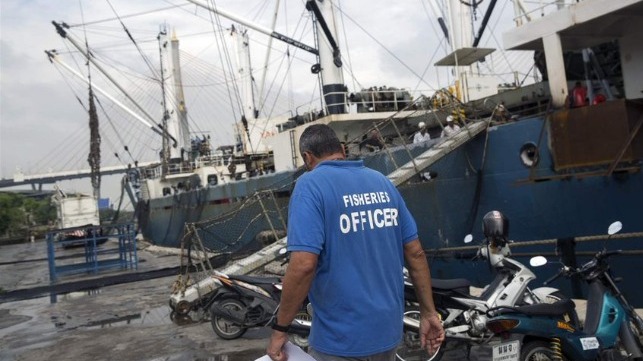Pew Researchers Launch IUU Fishing Analysis Tool for Port States

Researchers with the Pew Charitable Trusts have created a new tool for port states, fishing regulators and seafood buyers to determine where illegally-caught seafood is most likely to come ashore. By launching the tool on World Maritime Day, Pew hopes to draw attention to the problem of IUU fishing and the potential solutions.
Illegal, unreported, and unregulated (IUU) fishing accounts for about $24 billion worth of catch annually. It often leads to overfishing, damaging the livelihoods of law-abiding fishermen and subsistence fishing communities.
The new tool uses AIS data from fishing vessels and tenders, and it focuses on ports with the highest number of visits from foreign-flagged fishing vessels. According to Pew, IUU fishing could be greatly reduced through stronger controls at ports, and the new tool is designed to help by showing which port states are most likely to receive vessels carrying IUU-caught fish. The tool also shows which ports and states are busiest, making it a way to examine activity patterns of fishing vessels.
In 2016, the United Nations Food and Agriculture Organization Agreement on Port State Measures (PSMA) entered into force, helping to combat illegal fishing by requiring parties to place tighter controls on foreign-flagged vessels seeking to enter and use their ports. Today, 66 countries and the EU are party to the treaty. Of the 25 riskiest port states identified by the study, only four had ratified the PSMA.
The numbers also show a concentration of port calls, with most foreign fishing activity clustered into a smaller number of ports in each state. The tool suggests that Zhoushan, China has by far the most port calls by AIS-enabled fishing vessels, followed by other Chinese ports. Pew's researchers previously found that all of the top 10 ports for AIS-enabled fishing vessels are located in China.
The dataset may have limitations when looking at ports that serve less-formal fleets: the tool suggests that Bangkok had only 28 fishing boat port calls for all of 2017, a potential reflection of the Thai fleet's AIS use patterns.
In a briefing paper, Pew project director Peter Horn and senior officer Dawn Borg Costanzi laid out ways that the tool could help:
Show which fleets visit which ports: Users can zero in on flag State fleets to see which ports and States its vessels are visiting. This vital data can help show which fleets are visiting higher-risk ports and which States might benefit most from increasing oversight of their vessels’ foreign port visits and from effective port State measures.
Help seafood buyers gauge risk within their supply chains: Most seafood industry buyers conduct due diligence to ensure that the fish they’re purchasing was caught legally. These buyers can use the tool to evaluate the IUU risk of fish landed in a given port or state.
Help identify priority areas for PSMA implementation and capacity development: Governments and NGOs can use the tool to help determine which ports and states need technical assistance to improve performance.
Provide new information to researchers and academics: The dataset is the first of its kind to be publicly available online, and it is a unique tool for researchers.
